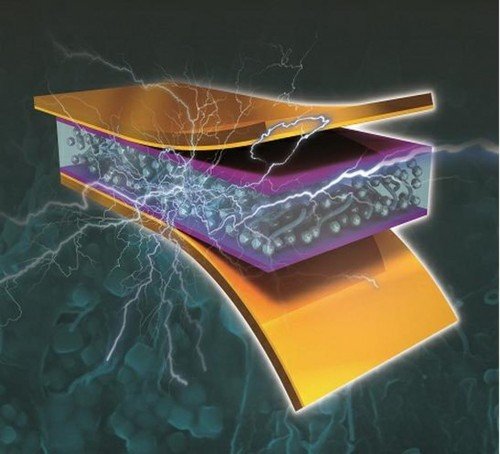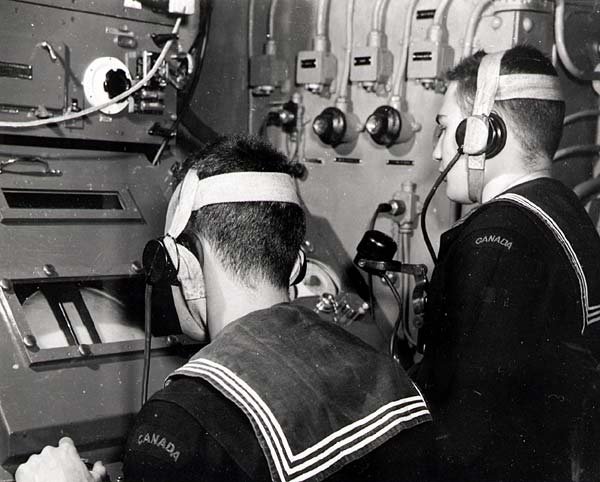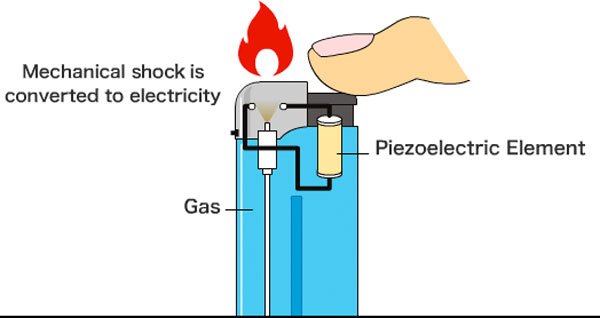Harvesting Waste Energy With Piezoelectrics

Artistic rendering of a piezoelectric nanogenerator
In the future, our sneakers might generate electricity as we walk. Wireless headphones could run off of body heat. And blue jeans could recharge our cell phone batteries. How will this all be possible? The answer is in piezoelectricity. Recently I saw a news article about new work developing piezoelectrics for power generation. I spent several years working in a lab studying piezoelectrics, so this caught my eye. A short explanation of piezoelectricity (shamelessly adapted from my own thesis):
Piezoelectricity is the behavior of special materials where electric charge is generated in response to an applied mechanical stress. The word itself is derived from the Greek word piezo, which means to push or squeeze. Basically, piezoelectric materials generate electricity when you squeeze them[1]. All piezoelectric materials also demonstrate an inverse piezoelectric effect. When you apply an electric field, the material actually deforms. This can allow you to make precise movements by controlling the electricity into a piezolectric device.
The cause of the piezoelectric effect is related to electric dipole moments in a solid. Electric dipole moments is a fancy term for a a separation between a positive and negative charge. When a material has an asymmetric crystal structure, these charges can add up[2]. In a normal, symmetric material, the charges get canceled out and you can't generate any electricity. Different types of materials such as crystals, ceramics and polymers can all be piezoelectric. For my own research projects, I focused on polyvinylidene fluoride (PVDF), a piezoelectric polymer. Unlike crystals, the piezoelectricity in polymers is due to the long molecular chain structure [3].

A schematic of the piezo and pyroelectric effects
Like many piezoelectric materials, PVDF is also pyroelectric. This means PVDF will generate an electric potential when heated or cooled. In pyroelectric materials, the temper-
ature change causes the atoms to slightly move. This affects the crystal structure, changing the polarization of the material. One last characteristic of PVDF is that it is flexoelectric. Flexoelectricity, also know as gradient piezoelectricity, is polarization due to bending of a material. In practice, a material’s flexoelectric response is generally much smaller than its piezoelectric response [4]. All of these unique properties can be combined in useful ways.
While piezoelectricity was discovered over 100 years ago, only in the last 30 years have
uses for the effect taken off. After the discovery of pyroelectric materials in the eighteenth century, the concept of piezoelectricity was first hypothesized. The discovery of piezoelectric materials did not occur until the late nineteenth century by the famous Marie and Pierre Curie. This effect was demonstrated in quartz and rochelle salt. The first practical application of the piezoelectric effect did not occur until the development of sonar using quartz during World War I. This sparked further research into applications for piezoelectric materials. During World War II piezoceramics such as barium titanate were developed.

Piezoelectric crystals first became widely used during WWII
After the war development of piezoelectrics continued with a focus on low cost, high reliability and ruggedness. Piezoelectricity now finds uses in a wide array of applications. Ultrasonic transducers used for medical imaging and non-destructive testing contain piezoelectrics. Atomic force microscopes and scanning tunneling microscopes use converse piezoelectricity to precisely move probes one atom at a time. On the other end of the spectrum, cigarette lighters, stoves and furnaces use piezoelectricity to generate a spark. In general, piezoceramics are used for these applications, but piezopolymers have tremendous potential too.

Push button lighters use piezoelectricity
Piezoelectrics are currently everywhere, but as I wrote in the intro, they have so much more potential. A layer of piezoelectrics in your shoes could charge a battery with each step. Likewise, a layer of piezoelectric in the road or sidewalk could power street signs in high-traffic areas. Using body heat and pyroelectricity, small devices such as headphones could run forever without recharging. I look forward to following these concepts in the coming years as they leave the lab and become practical. Keep your eye out for piezoelectric devices. You might be surprised just how often you use one!
Again, a very high quality post, shorter but nevertheless sweet and a half. thanks for the education. I also own a piezoelectric lighter and, as it is my third one, a technology i have adopted a long time ago and which I am very pleased.
Thanks a bunch for sharing and namaste :)
Somehow I had missed following you. That's easily fixed. Thank you, glad you enjoyed it.
It has been my pleasure and even more so an honour to have you following my sharing on steemit.com. Thank you, all for one and one for all! Namaste :)
Thanks a lot for this very instructive post, as usual :)
This post has been ranked within the top 80 most undervalued posts in the first half of Feb 12. We estimate that this post is undervalued by $4.45 as compared to a scenario in which every voter had an equal say.
See the full rankings and details in The Daily Tribune: Feb 12 - Part I. You can also read about some of our methodology, data analysis and technical details in our initial post.
If you are the author and would prefer not to receive these comments, simply reply "Stop" to this comment.
The links for citations 2 and 3 (IE your in text numbers) do not work.
Looks good though @vir! Thanks.
All of the links should work now. Originally, I just listed the journal articles at the bottom and did not put in links. Turns out two of the three were open source, so everyone can read them. I was pleasantly surprised, because I was working from the old copies I had downloaded. Cheers!
Wonderful, thank you! :)